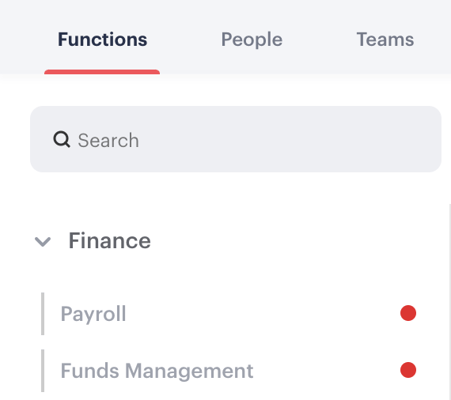Not long ago, an executive could go through an entire leadership career and experience only a couple of organizational redesigns. Now, leaders can expect to contend with several. So can their employees. Redesigns have simply become a reality for operating virtually any business.
For leaders and their team members to function successfully, they must understand organizational design, why the redesign is necessary, and how to conduct an organizational redesign that results in positive outcomes.
Organizational design definition
Organizational design is the process of creating organizational structures and determining how these structures will interact with one another. The primary goal of organizational design is to end up with an organizational structure that supports the goals that have been created for the business.
Organizational design impacts multiple parts of an organization. Essentially, it defines how people work. Org design influences who makes decisions and how these decisions are made. It affects whom workers report to and how communication works within and between teams.

Why redesign the organization?
The simplest reason to redesign an organization is that things change, and companies must also change in order to survive. That’s what drives the need to make changes to organizational design. Exactly what those changes are can vary widely, and so can the depth and breadth of the changes.
Here are some of the more common triggers of an organizational redesign:
- Change in leadership
- Financial difficulties
- Introduction or loss of products or services
- Regulatory changes
- Rapid company growth
- Damage to reputation
- Low morale/high turnover
- Poor work/product quality
- New competition
- Growth opportunities
Each of these circumstances can lead to big or small changes to company goals. This in turn can make it necessary to engage in organizational redesign on some scale.
How does redesign impact an organization?
Organizational redesign can have many positive impacts on your organization. Unfortunately, there can also be negative effects if the redesign is poorly done.
Here are some of the positive impacts:
- A work environment that is better at meeting workers’ needs
- Increased efficiency
- Improved staff retention
- More agility in times of stress or change
- A better understanding of organizational values
- Improved communication
- Increased sense of ownership
- Better market relevance
There’s always some risk that an organizational redesign will fail. Here are some of the negative impacts that are common when this happens:
- Change isn’t sustainable
- People are frustrated or feel disenfranchised
- Increased turnover
- Lack of bonding to new goals and vision
- Inability to overcome roadblocks
- Issues that triggered redesign remain unaddressed
- New roles and responsibilities aren’t communicated clearly

Anyone who is participating in an organizational redesign should plan carefully to increase the chance of successful outcomes. At the same time, it’s also important to plan for some issues that will need to be overcome before the redesign is complete.
5 steps to executing an organizational redesign
Even a smaller-scale organizational redesign shouldn’t be taken lightly. It’s important to take a measured approach and plan the redesign carefully. Take the following steps to achieve more positive results.
1. List the potential impacts of the redesign
Before you do anything else, make a list of all of the potential impacts the redesign will have on the organization. Consider the following details in particular.
The size of your organization
Certain redesign efforts may work better for organizations that are smaller. Others are better for larger companies.
For example, increasing the number of teams in a large organization can increase efficiency and a sense of focus. Doing the same in a smaller organization might make things needlessly complex. Additionally, consider whether the redesign is in response to or anticipation of organizational growth.
Regulatory controls
Some organizational changes can be implemented simply because leaders determine they are best for the organization. However, in some cases and in some industries there are regulatory issues that can impact how or if organizational changes can take place.
For example, government entities, banks, healthcare providers, and airlines may not have as much flexibility when it comes to implementing change.
 Many big corporations are subject to regulatory compliance which can influence their organizational design decisions.
Many big corporations are subject to regulatory compliance which can influence their organizational design decisions.
The strategy behind the change
What is the overall strategy your organizational design needs to support?
If you have a strategy that values high levels of productivity and adhering to a strict budget, then a traditional organizational structure with a deep chain of command might work best. However, if your strategy emphasizes an organization that thrives on creativity and autonomy, that might backfire.
Your use of incentives
How are you using incentives as a tool to motivate workers and reward better performance? Will that work after the redesign? It’s a good idea to review what you are using as incentives and change them to align with your redesign.
The market ecosystem
What is the market like in your industry? Are you faced with rapid change and volatility? Your organizational design should allow you to be agile enough to respond to changes. At the same time, a more traditional organizational structure can serve as a protective element for key functions that must be executed effectively no matter what.
2. Achieve buy-in from all stakeholders
There are two important goals to accomplish here.
The first is to ensure that all stakeholders have a clear understanding of the new organizational design and the reasoning behind it. They should be able to restate these changes and show that they understand them. This especially includes how the changes will impact their workflow and their teams.
Next, you need to gather feedback on how they feel about it. This is the time to address any reservations that stakeholders have.
3. Prioritize business functions
Before you begin to execute any plans for a redesign, it’s important to define which business functions have the highest priority. These will be the business areas that are most important to your new goals and strategies.
These departments often include product development, project management, communications, and customer service. Remember that an organizational redesign may even lead to the creation of new functional areas.
Once you know which core functions are most critical, create a chart that identifies the dependencies between these functions. To do this, avoid thinking from a hierarchical perspective. You don’t want to make assumptions that are based on old ideas of what is valuable or deserves to be treated as a higher priority.
 Functionly includes a functional library to assist leaders in organizational design and planning projects.
Functionly includes a functional library to assist leaders in organizational design and planning projects.
Also, don’t let the current rank or power of individuals influence this. This step is about which functions are most important, not which people.
4. Determine which competencies are most important
What are the skills and capabilities that you will need for your new organizational structure to be effective?
Consider meeting with staff directly to hold focus groups and informational interviews. You want to understand where their skills are now and what new skills they will need to adapt to the new structure. Use this information along with what you’ve learned about organizational design models to list gaps in the most important competencies.
This step connects to the previous one. Ultimately your first priority is to ensure that you have the human resources in place to execute the core functions you have set as top priority.
5. Know where culture needs to be changed
Organizational design and company culture are tightly interwoven. You can’t change org design without identifying where those changes might fly in the face of the existing culture.
For example, an organization with a strict hierarchical structure might instill in its team members a sense of pride in accountability and accuracy. That part of the organizational culture is positive and may be something you want to continue to embrace even if you switch to an organizational design with a flatter hierarchy.
In other cases, you may identify aspects of the company culture that could be holding the organization back.
Future org design: The T-shaped Organization
What causes an organization to struggle with communication and collaboration, especially across functional areas? These issues are often caused by an overabundance of I-shaped employees in the organization.
What does I-shaped mean? An I-shaped person has a depth of knowledge in a single area of expertise. They may be a marketing person, a finance person, or a product development person. Whatever the case, they have in-depth knowledge and skills but lack breadth.
Why is this a problem? When a group of I-shaped individuals gets together to collaborate on organizational problems, they all struggle to understand points of view that are outside their areas of expertise. This leads to an I-shaped organization, where information silos are the norm and teams struggle to work together.
Now, organizational leaders are seeing the value of T-shaped individuals who can work together to create a T-shaped organization.
In this emerging organizational design format, individuals and teams still have the depth of skills they need to function, but these skills are enhanced with a breadth of soft skills that enable communication, negotiation, and collaboration.
Final thoughts: Org redesign to future-proof companies
Organizational redesign is a necessary process to ensure that businesses remain productive and competitive when faced with emerging challenges. The steps involved in org redesign allow leaders to review priorities and restructure the organization to continue to meet organizational goals.
Many leaders use Functionly as part of their organizational design toolkit. Start for free.





